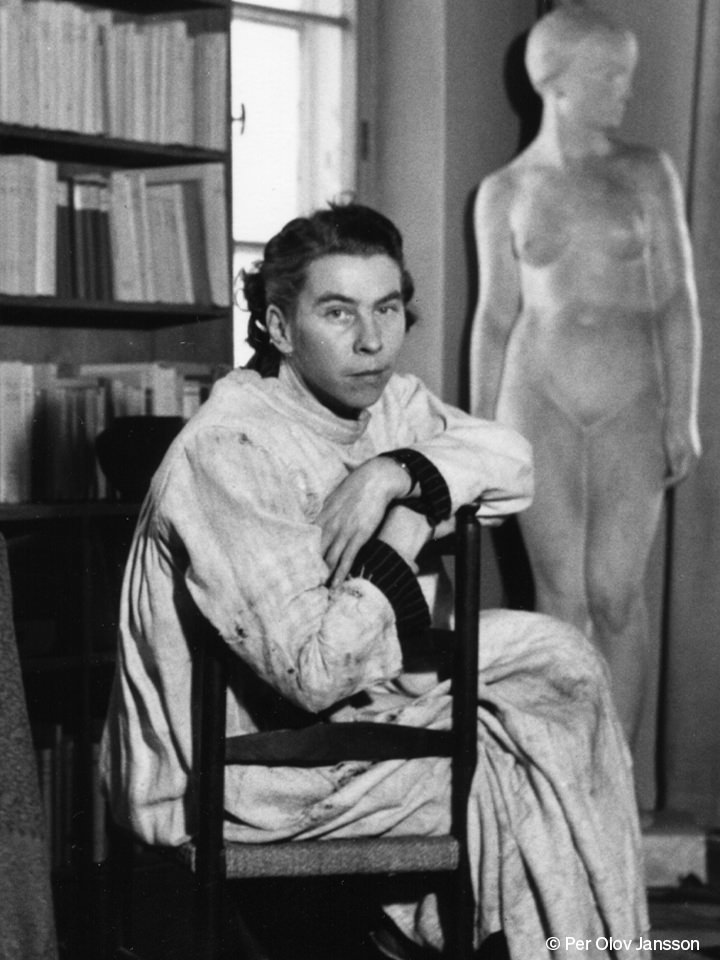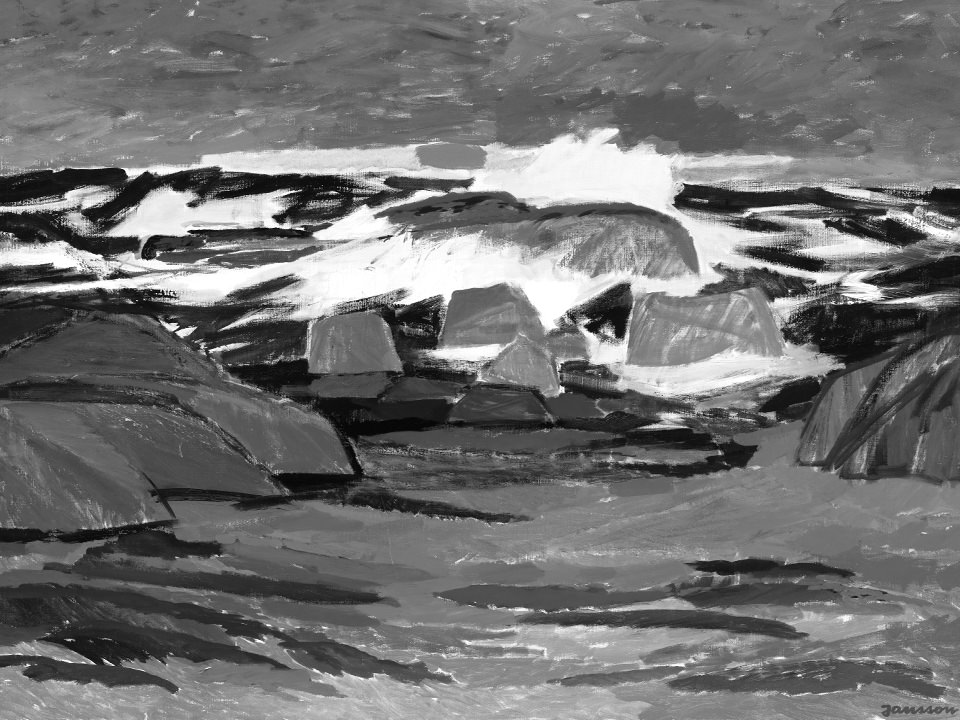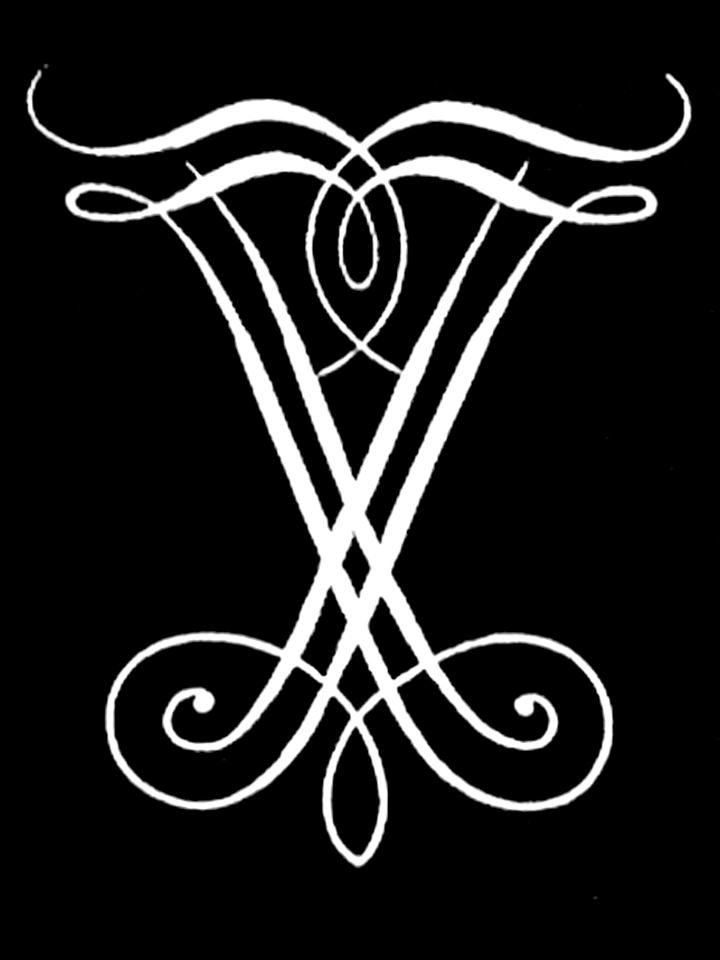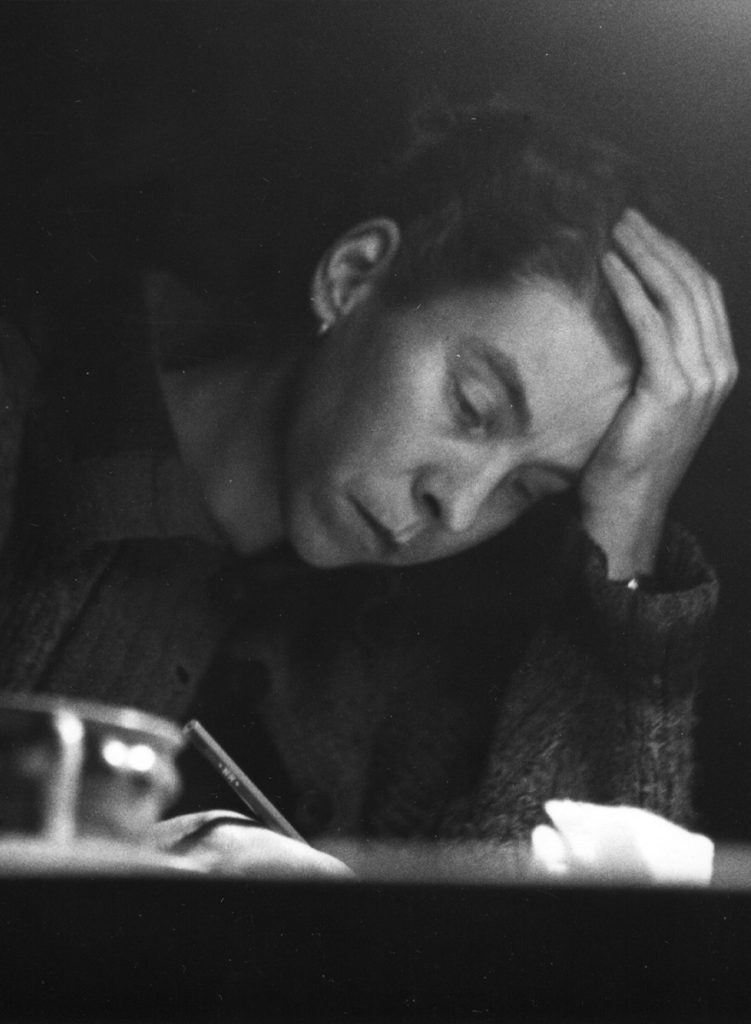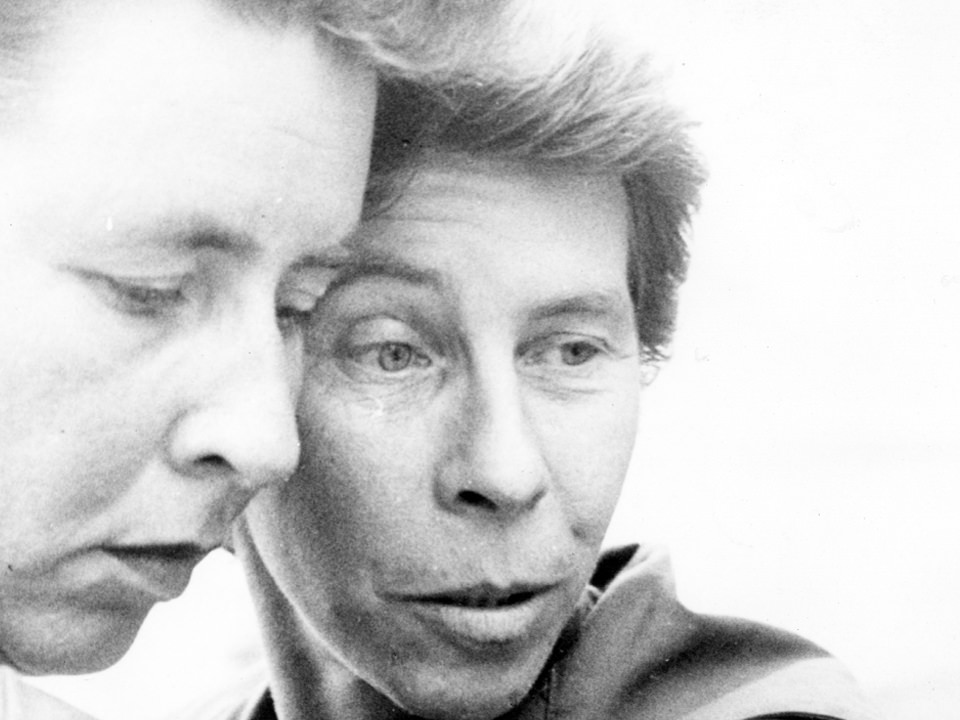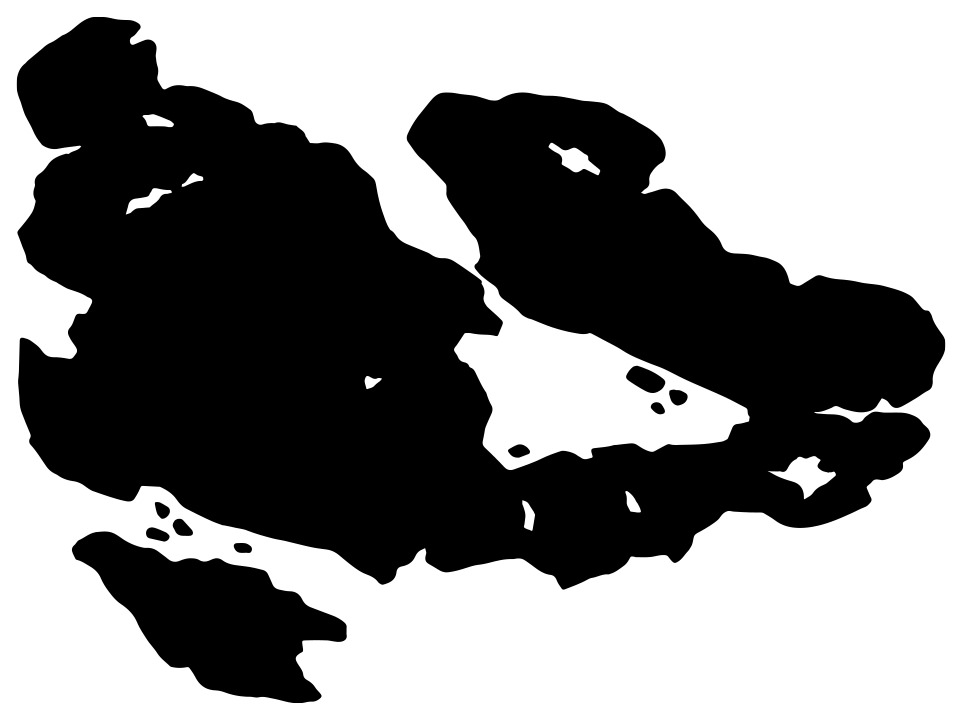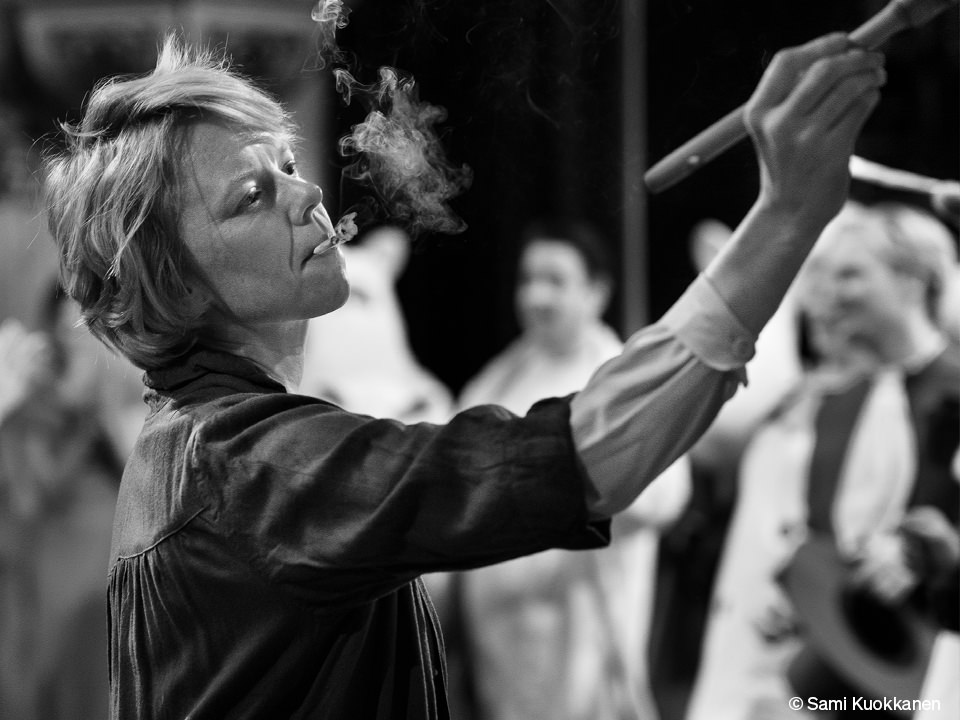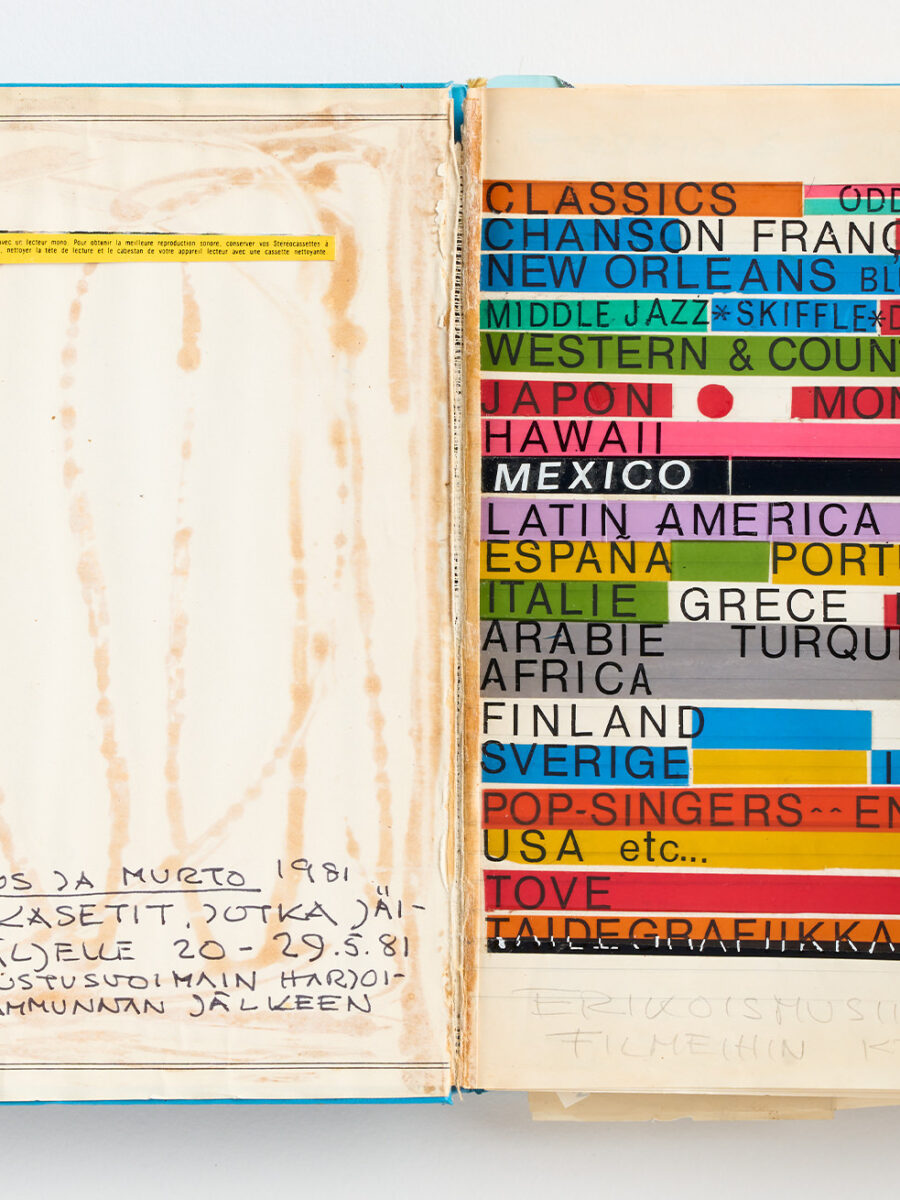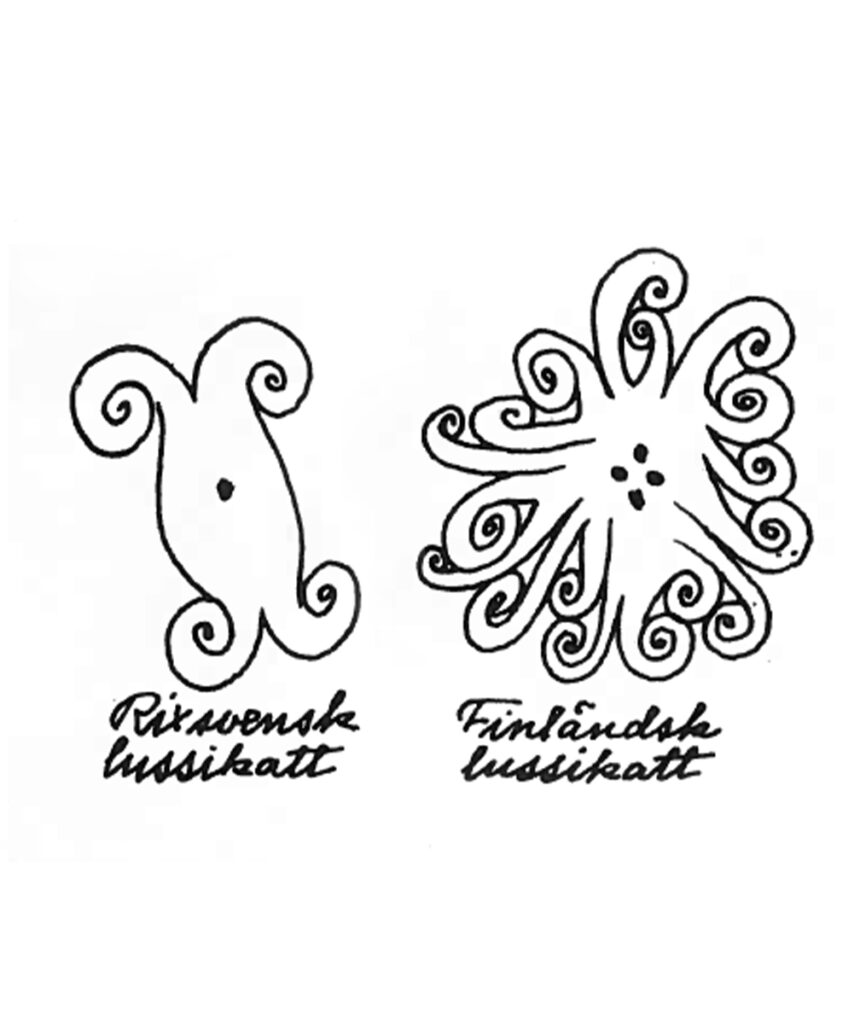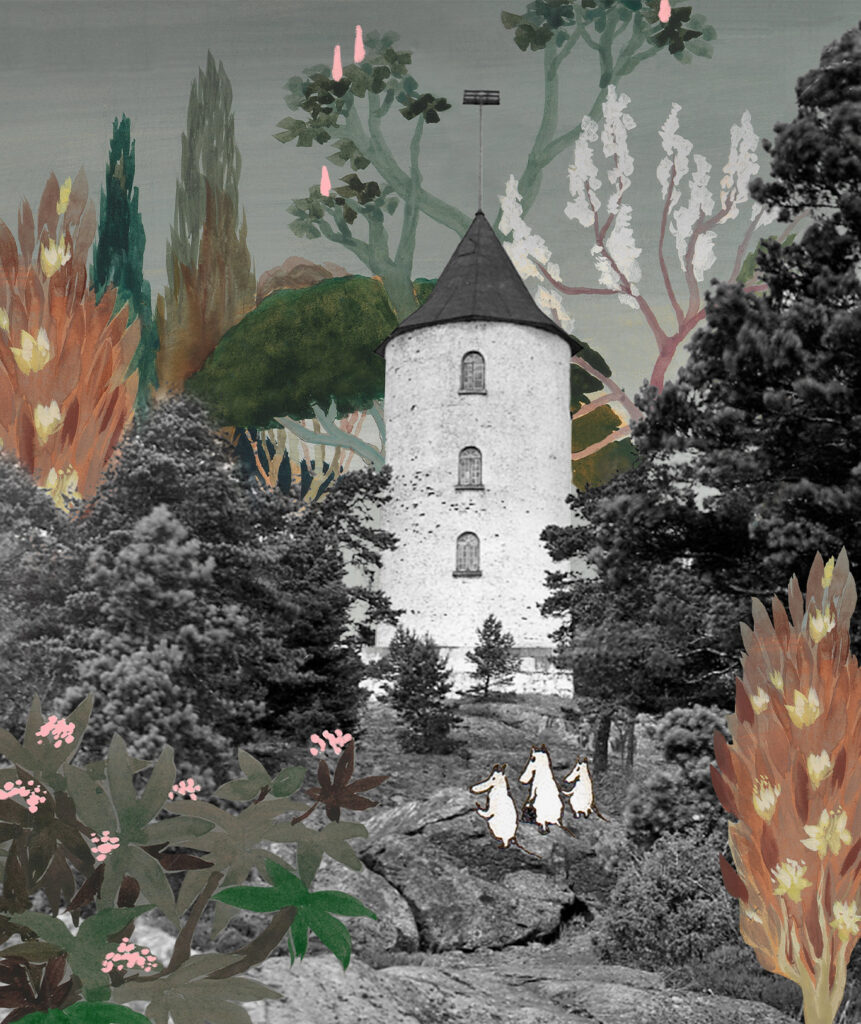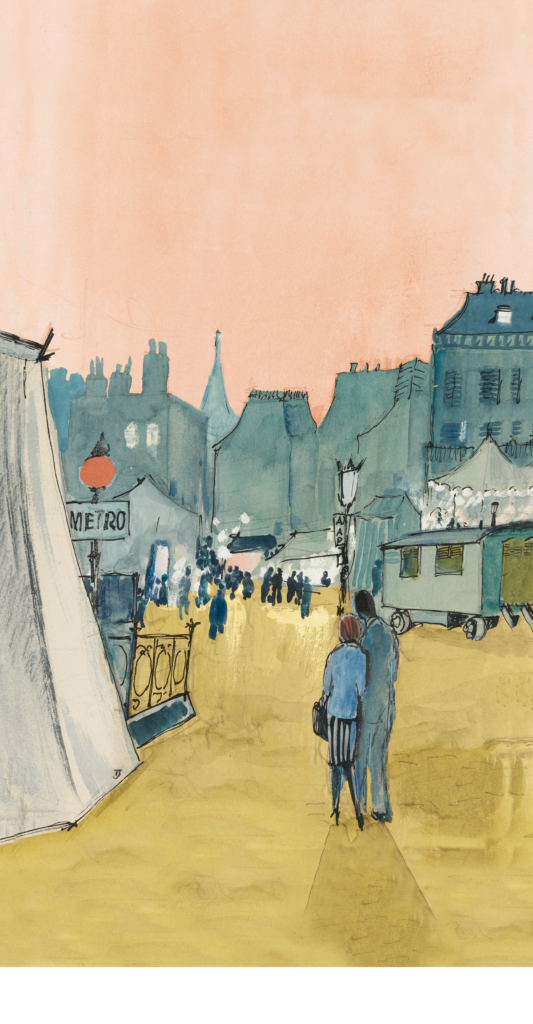
Tove Jansson’s Paris Part 1: Studies and dreams

The city of Paris played an important role in Tove Jansson’s life. In this first part of the series Tove Jansson’s Paris, we take a look at the city through the eyes of a young woman who went there for studies and left her heart there for life.
Tove Jansson spent considerable time in Paris, and the city’s influence is mirrored throughout her life and career. In fact, the city was formative for her family’s very existence.
Paris – the city where Tove Jansson’s parents met
The two young aspiring Nordic artists Signe (Ham) Hammarsten and Viktor (Faffan) Jansson met in 1910 in Paris as young art students. They met at Académie de la Grande Chaumière in Montparnasse, where they were both studying. With time, they got a studio on Rue du Moulin de Beurre, close to rue de la Gaité, in a house that has since been torn down. Ham was from Sweden and Faffan from Finland, and when Ham became pregnant with their first child, Tove, they moved to Faffan’s home town, Helsinki. But Paris and France remained important for the entire family.
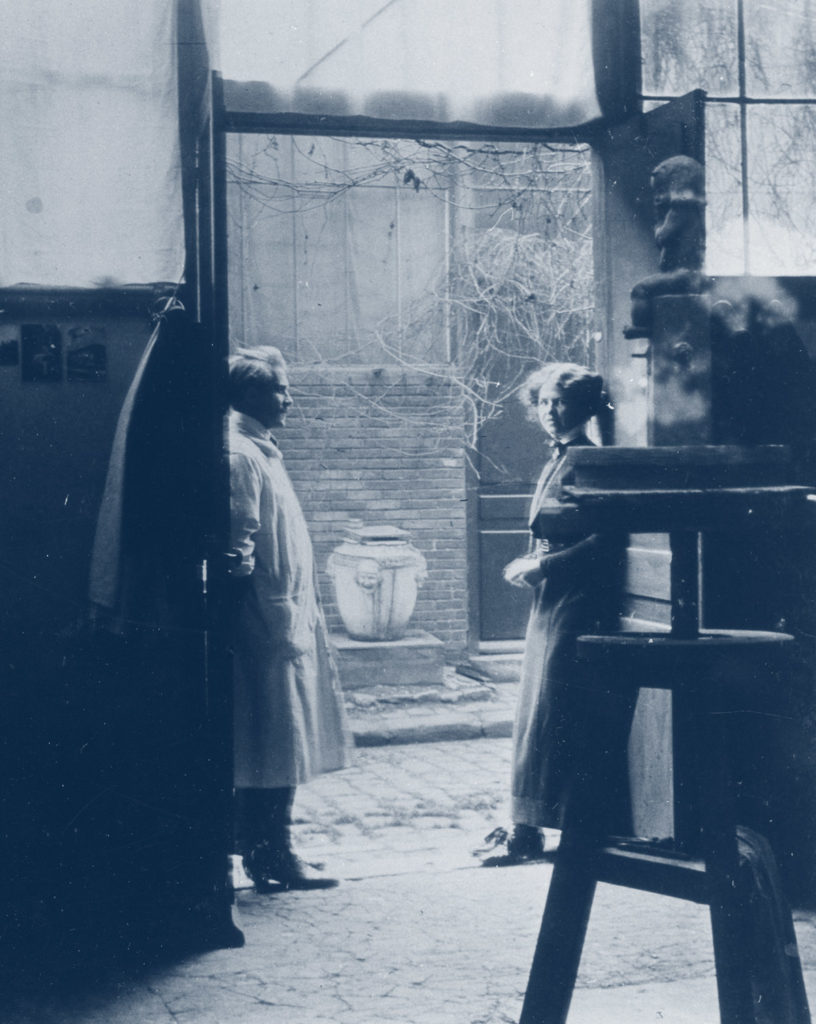
 Viktor Jansson and Signe Hammarsten Jansson met in Paris.
Viktor Jansson and Signe Hammarsten Jansson met in Paris.First visit to Paris at the age of 20
In 1934, when Tove Jansson was 20 years old, she embarked on her first longer trip to central Europe. She spent time mainly in Germany, where she stayed with relatives.
But she also visited Paris for the first time, spending two weeks in the vibrant cultural capital of the continent. Those weeks had a profound impact on her both personally and artistically, and further ignited her desire to study abroad and travel the world.
”I sat in the Luxembourg Gardens reading […] because I was so tired of looking at art”
– Tove Jansson in a letter to her brother Per Olov Jansson, 1938
Four years later, in 1938, she returned to spend the spring in Paris. She began studying art at the very same institution where her parents had met. She eventually ended up studying art at several art schools in the city; the Académie de la Grande Chaumière, Atelier Adrien Holy, and the eminent École des Beaux-Arts.
She didn’t like the atmosphere at the legendary institution and quit Beaux-Arts after only two weeks, returning to Ateliér Adrien Holy, which she liked the best.
Finding her own way as an art student
As a student, she was strongly influenced by the 1930s School of Paris and eagerly visited museums and galleries to learn from her contemporaries and the great masters.
”Paris is definitely the right place to deal a blow to the final vestiges of one’s inferiority complex!”
But Paris was also an important stepping stone in finding her own path. In a letter to her mother Signe Hammarsten Jansson, in April 1938, Tove writes about finding her style and liberating herself from over-admired idols.
“Today I was at the Musée de Luxembourg and noted with a certain satisfaction that I no longer got stuck in front of every canvas, confusing myself with the diversity of manières and styles of perception, but calmly walked past things that did not fit with my way of seeing, and knew for sure what I liked and what I could learn from.”
In an earlier letter that spring, from February 14th, she writes:
“Let me tell you – Paris is definitely the right place to deal a blow to the final vestiges of one’s inferiority complex! One simply has to get over it to survive. If you are the least bit shy, compliant, apologetic or anxious, you end up feeling like a doormat before the day is over. All the concierges, constant little faux pas in matters of etiquette and French custom, the women with their devastating self-confidence, beauty and refinement of dress, haughty garçons, cheeky gamines, sales assistants who try to cheat you as much as possible and almost despise you if you don’t haggle, a blasé restaurant clientele always eager to find fault etc”
Letters from Paris
“Here in Paris, you can’t be afraid of colour, it sparkles everywhere; every little tobacconist’s is painted in its own cheery shade and the air makes everything even more brilliant and alive.“ Tove Jansson wrote to her mother in April 1938.
Tove Jansson wrote long letters to her family from Paris. In a letter to her brother Per Olov from 1938, she describes an iconic Parisian street view as follows:
“Rue de la Seine is where all the little art salons cluster, with perpetual openings of new exhibitions, shops selling paints, antique dealers, here and there a greengrocer’s stall, a bistro.”
Personal maps of Paris à la Tove Jansson
In the same letter to Per Olov from 1938, she draws a map of the streets she normally frequents.
“I’ve become almost like one of those genuine Parisians who have never been on the other side of the Seine. Rive droit – why bother to go there when one has everything in one’s own district! [ … ]”
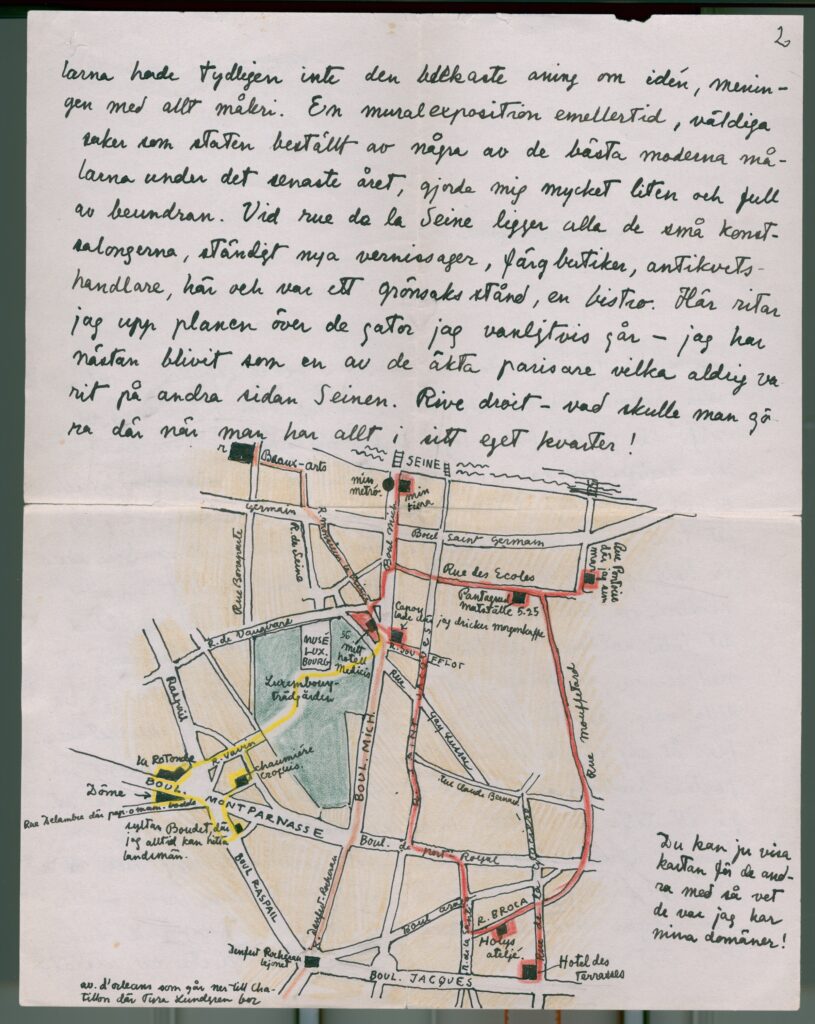
 Map of Paris by Tove Jansson
Map of Paris by Tove JanssonIn another letter from 1938, Tove invites her mother Ham to imagine her Parisian neighborhood:
“Just imagine your following me on the map! Hôtel des Terrasses is right on the corner of Boul. St. Jacques which I go along every morning as far as the beautiful lion sculpture and then carry on to Chaumière along Raspail. I generally walk home via Port Royal because there’s sometimes such a lively and colourful market there. That way takes twenty minutes, if I walk briskly enough. Opposite my window there is a property with a tall, empty façade. When the wind blows, a broken gutter keeps knocking against the wall, and in the evenings I can see the Métro trains with their lights go thundering by.”
Two short stories from 1938 depict life as an art student in Paris
In 1938, Tove published two short stories which took place in Paris, clearly influenced by her studies in the city during the same year.
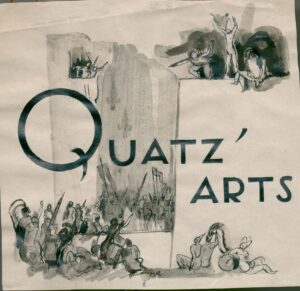
Quatz’ Arts depicts the experiences of a young female art student at the legendary Beaux Arts.
She describes different rites of passage where the new students are socialized into what studying art at a renowned establishment means. The culmination is the carnivalesque celebration of Quatz’ Arts – the annual carnival at Beaux Arts.
“At the bistro where the Beaux Arts’ students always went, la patronne was lurking in the doorway. She yawned and said: “Mon Dieu. Where do they find the energy?” I remember my initiation into the temple of art, the pourboire that I had to pay in that café. You had to buy drinks for everyone and stand on a table to sing the songs of your homeland. “Ice cold schnapps on a delicate stem” made little impression, but “Cuckoo, cuckoo, faraway cuckoo” was a colossal success. For a week afterwards they sang nothing at Beaux Arts but kukkukakkalukukkula, and nothing could shift them from their conviction that the splendidly barbaric song was composed by Sibelius. When you got to the end, two of the young men grabbed your skirt and yanked it high over your head.”
The Beard – under the spell of a Parisian artist
“…she knew herself to be under scrutiny; she was wearing a new hat, of course, and Paris had never seen her before.”
The Beard, another short story which Jansson published the same year, centres on the experience of a young Scandinavian woman, Kristina, who falls under the spell of a more experienced French artist – “a bohème, no doubt”, as she puts it. These are the first lines of the story:
“She walked along the boulevard, waiting for something to happen. That is – for something to happen to her, for she was eighteen years old. The dense mass of humanity moved along with pleasant indolence and the pavement cafés were full. She passed them with a vague sensation of stiffness in her neck because she knew herself to be under scrutiny; she was wearing a new hat, of course, and Paris had never seen her before.”
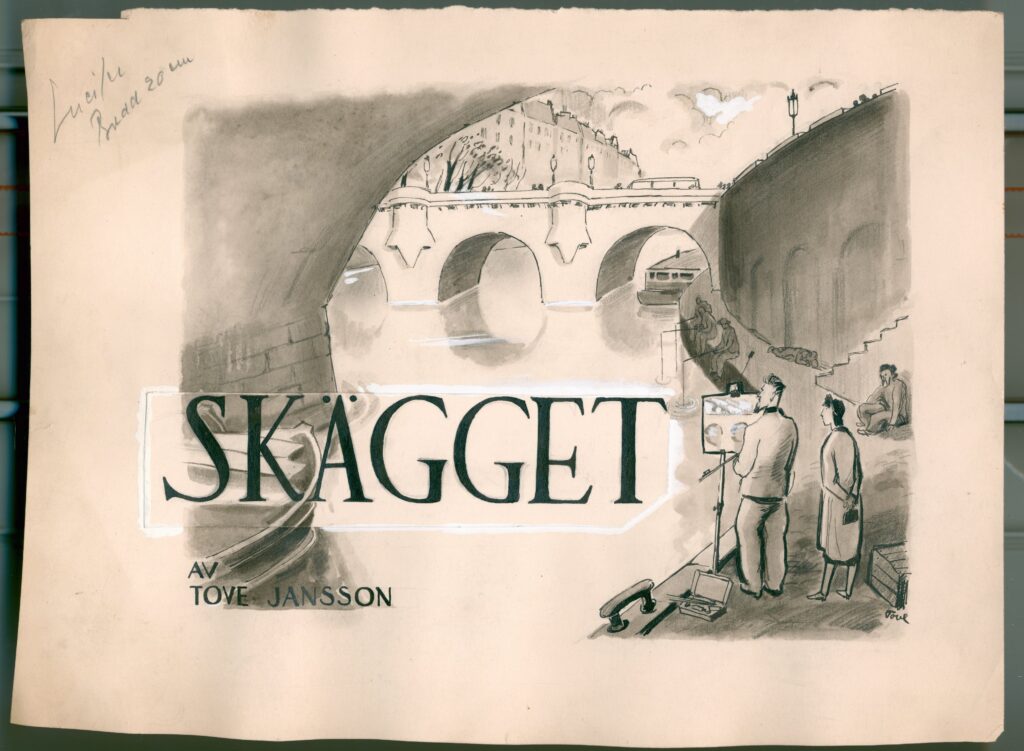
 Skägget by Tove Jansson
Skägget by Tove JanssonThe short stories were originally published in the Swedish magazines Lucifer and Svenska Pressen in Finland during the same year, 1938, and were later included in the short story collection Bulevarden och andra texter (2017) published by Förlaget.
Full stories featured in the Houses of Tove Jansson exhibition
Both short stories have been translated into English for the first time for the upcoming exhibition Houses of Tove Jansson, which opens in Paris on September 29th, 2023. The short stories are printed in the exhibition catalogue. Read more about the exhibition here.
The next part of Tove Jansson’s Paris will centre on two significant trips Tove Jansson took to the city with her parents, one with her mother and the other with her father.
Sources:
- Letters from Tove Jansson. First published in “Letters from Tove” (Sort of Books, edited by Boel Westin and Helen Svensson and translated from Swedish by Sarah Death).
- “Skägget” (“The Beard”) Originally published in Lucifer in 1938, included in Bulevarden och andra texter, Förlaget, Helsinki,
- “Quatz’ Arts” Originally published in Svenska Pressen 1938, included in Bulevarden och andra texter, F.rlaget, Helsinki, 2017. Translated from the Swedish by Sarah Death.

